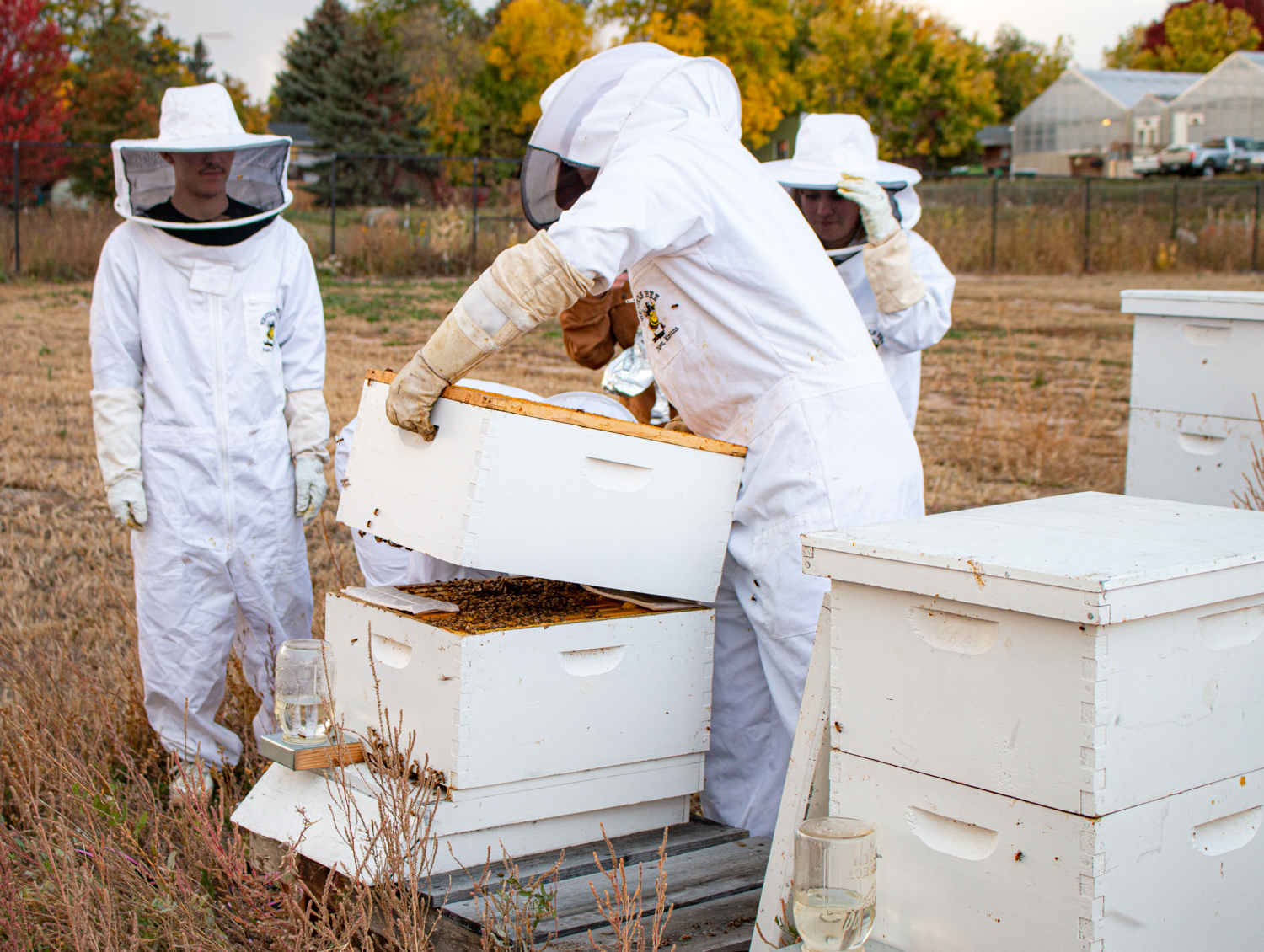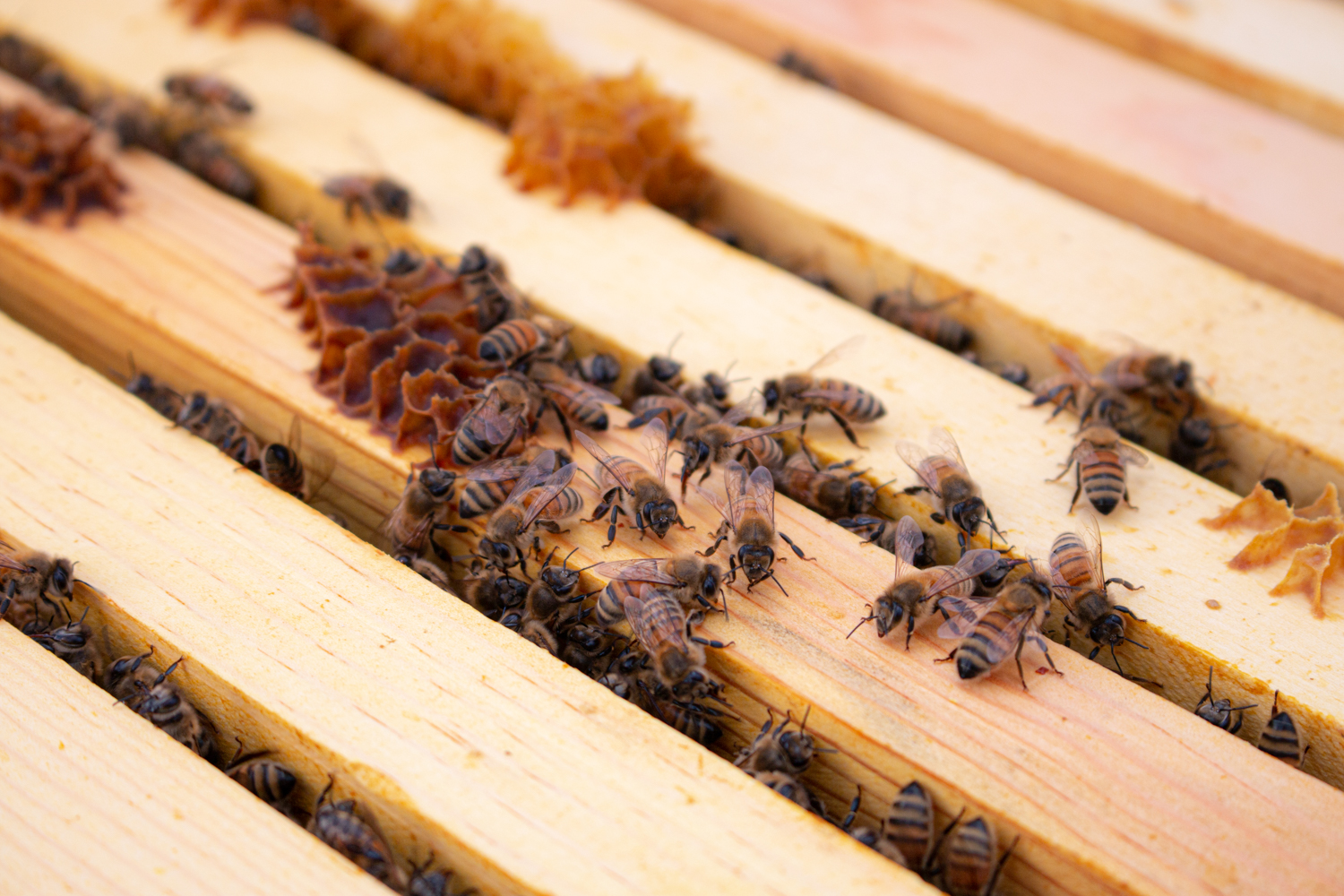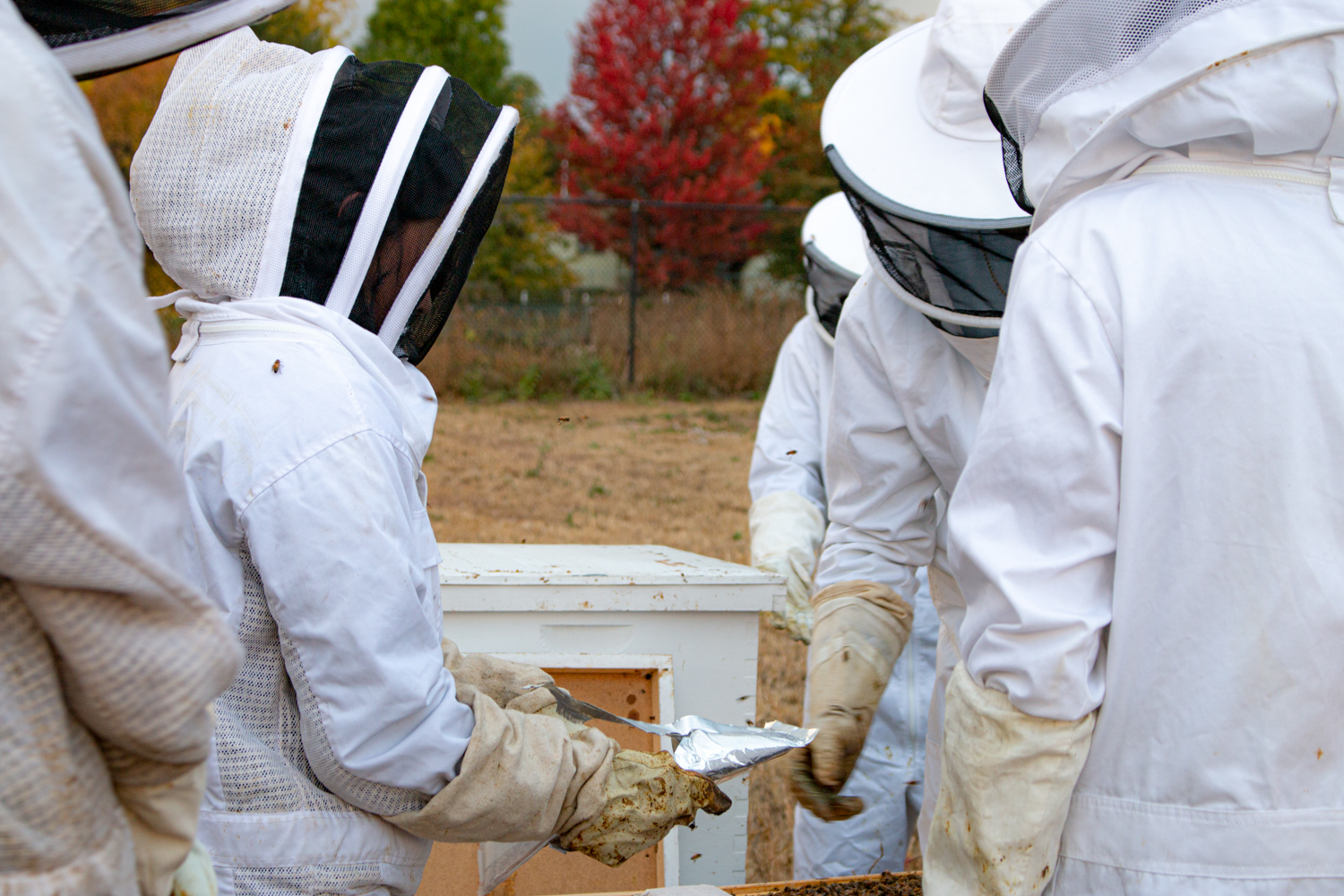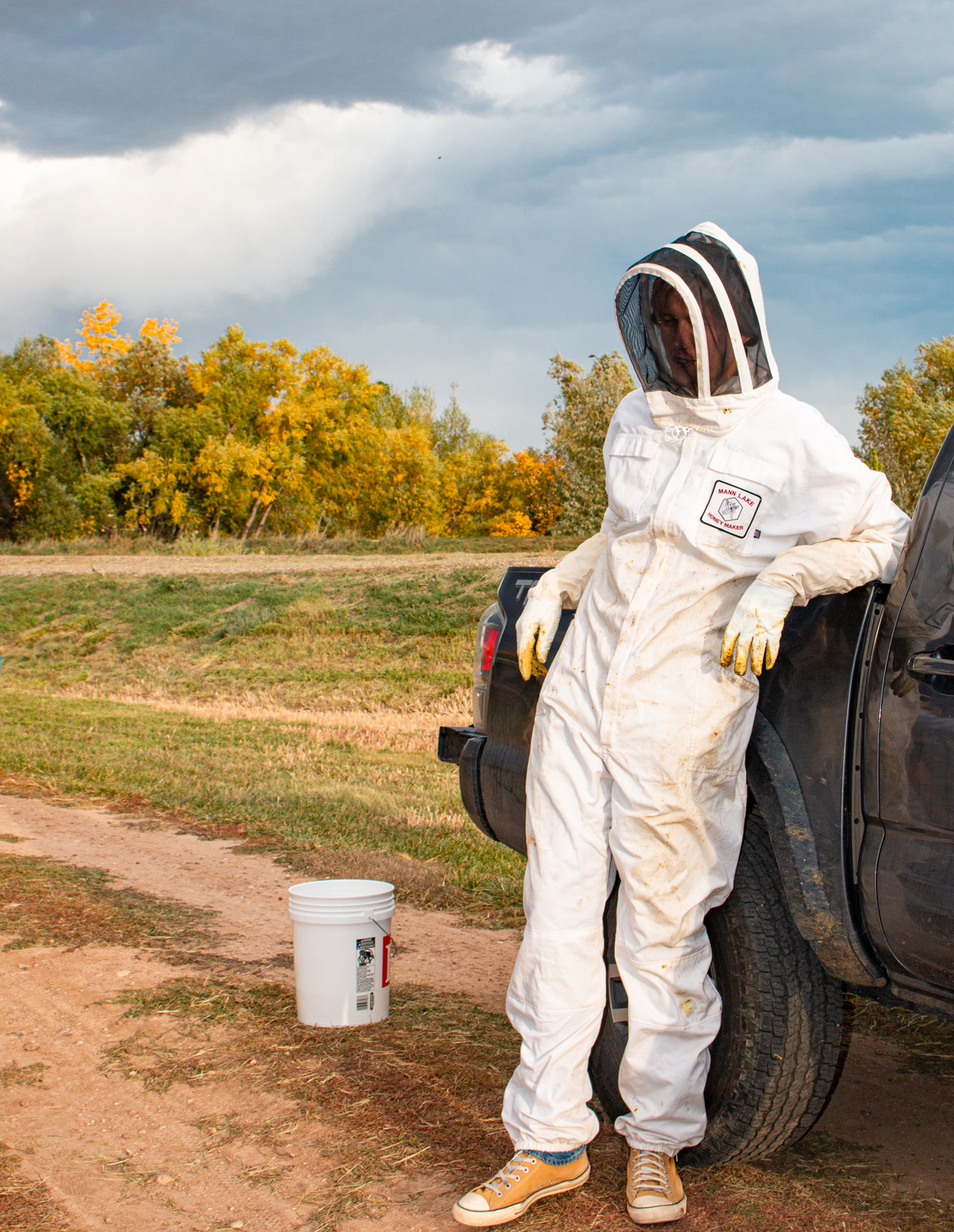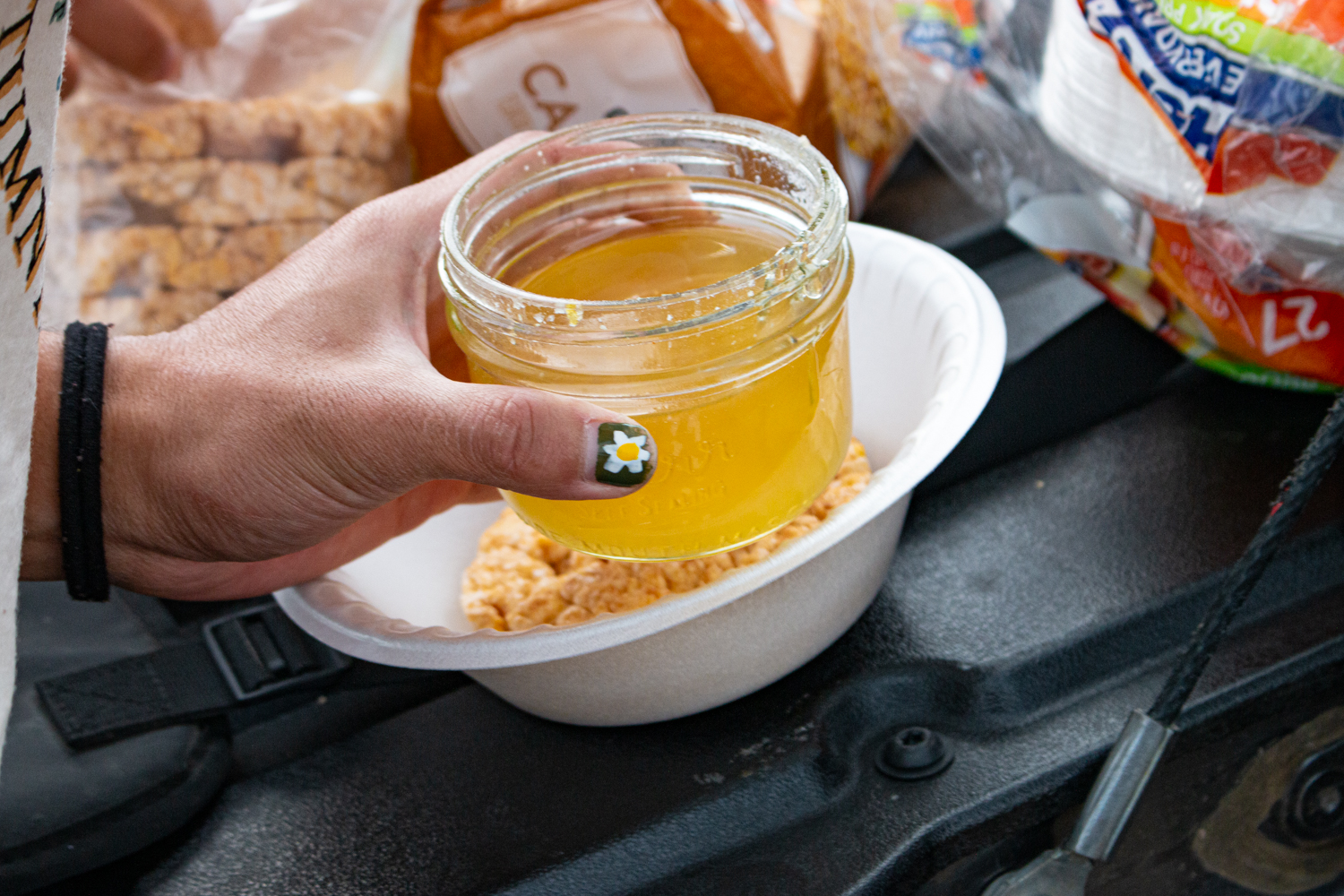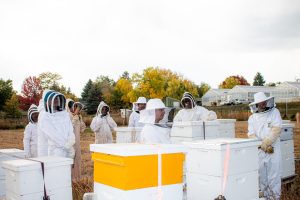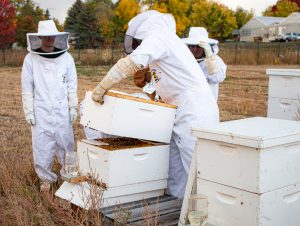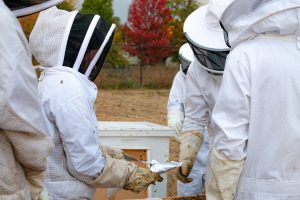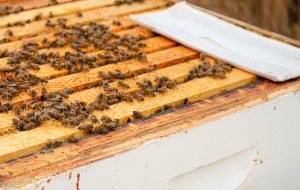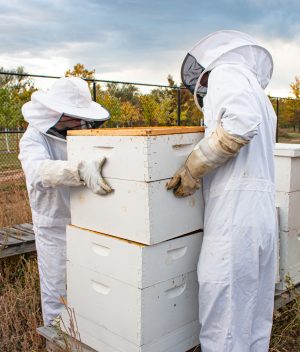Collegian | Bella Eckburg
A honey bee pollinates flowers near the Colorado State University Student Recreation Center pollinator garden Oct. 11, 2022.
Bella Eckburg, Opinion Director
October 20, 2022
The Colorado State University Apiculture Club met Oct. 11 to treat their hives for mites following an unusually high mite count at the last meeting. With autumn in full swing, the club members gathered at a gated area down a dirt road on the south side of the CSU Horticulture Center on Centre Avenue. The club will have two more meetings, one Oct. 26 and one when the first frost comes, where they’ll winterize the hives to survive the coming snow. Every meeting includes a honey tasting for the members so they can see firsthand how their hard work pays off. Joe Urynowicz, president of the CSU Apiculture Club, leads his fellow beekeepers in a fun and educational experience while cracking jokes along the way. He’s joined by the former club President Freddie Haberecht — among other members — who graduated from CSU and now works as a senior forestry specialist for the City of Fort Collins.
-
New and returning members of the Colorado State University Apiculture Club prepare to treat the hives by the CSU Horticulture Center Oct. 11. “It’s enough poison to kill mites and enough to kill some bees but not the whole hive,” club President Joe Urynowicz said. “It’s pretty nasty stuff, but you have to do it.”
-
Colorado State University Apiculture Club President Joe Urynowicz demonstrates how to take care of the hives after miticide treatment by the Colorado State University Horticulture Center Oct. 11. “(The mites) bring in parasites and diseases,” Urynowicz said. “And that can kill off the whole hive.”
-
Rebecca Lampl, Colorado State University Apiculture Club member, prepares to treat the hives with insecticide to fend off mites near the CSU Horticulture Center Oct. 11.
-
Honeybees pour out of the hive, ready for their miticide treatments Oct. 11.
-
Several Colorado State University Apiculture Club members work around a particularly active hive Oct. 11. “(The mites) bring in parasites and diseases, and that can kill off the whole hive,” club President Joe Urynowicz said. “Anti-mite gang out here.”
-
Each hive is treated with two pads soaked in mite poison that will sit for ten days Oct. 11. The brood boxes are one of the most targeted areas by the mites and need to be treated. “It’s the heart of the hive,” said Joseph Urynowicz, president of Colorado State University Apiculture Club. “If there’s going to be brood, … they’re going to be in this box.”
-
Colorado State University Apiculture Club President Joe Urynowicz works with a new member to carefully replace the bee boxes following treatment Oct. 11.
-
Senior Forestry Specialist Freddie Haberecht lounges against a truck in his bee suit Oct. 11. Due to the availability of bee suits, which current Apiculture Club President Joe Urynowicz produced from his truck in a cardboard box, the club split into two groups to tackle the task of treating the hives for mites.
-
Rykar Kimura, a Colorado State University senior horticulture major, taste tests the honey CSU Apiculture Club President Joe Urynowicz brought to the meeting Oct. 11.
Bella Eckburg can be reached at letters@collegian.com or on Twitter @yaycolor.




